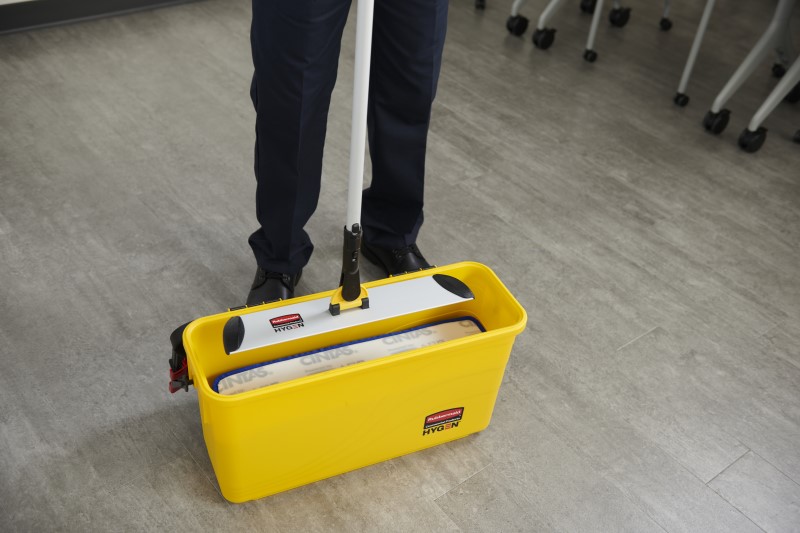
Now more than ever, schools should be laser-focused on developing a healthier and safer learning environment for students. Beyond classroom cleanliness, communal areas like the canteen should also be a priority to custodial staff. Because children are more susceptible to food-borne illness, creating a cleaning, disinfecting and sanitising strategy and following proper protocols are essential pieces to the puzzle of keeping children safe.
Staff and students are responsible for their personal hygiene, which can ultimately dictate how germs spread and cause potential food safety hazards.
Staff working directly in the school canteen need to take personal hygiene seriously in an effort to create a safe eating environment. General hand hygiene or hand washing may seem like a simple task to remember, but doing so ensures students safety is top of mind. Hand-washing before touching food is critical, as is washing hands before and after meal preparation and before and after serving students.
Hand-washing takes more effort than simply rinsing with water, as the Australian Institute of Food Safety stressed. Staff should wash with warm water, lathering up their hands thoroughly to ensure soap gets in all cracks and crevices from palm to finger. Once rinsed, staff should use disposable paper towels to dry — this is a simple way to avoid the collection and spread of germs that could cause contamination of food.
Providing hand sanitiser for students and staff to utilise after washing hands can be another way to safeguard against germs.
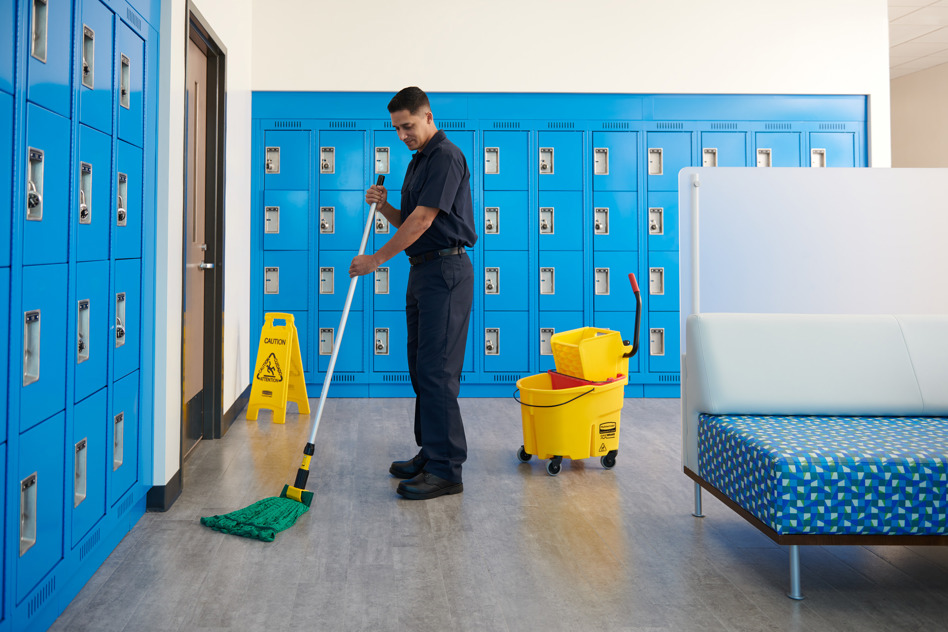
Schools must adhere to the Food Standards of Australia & New Zealand to protect students from foodborne illnesses and foster a healthy learning environment. These guidelines set the baseline for what every food handler in a school canteen should know and practise.
All canteen staff should be trained in personal hygiene and safe food preparation. Washing hands with warm water and soap before you handle and prepare food, after using the toilet, or after handling waste is critical. Staff should wear clean uniforms, gloves, and hairnets at all times.
Every school canteen must have a designated food safety supervisor who understands the risks of contamination and can guide others on food safety rules. Supervisors can also support compliance checks during local council inspections.
Some ingredients carry more risk than others. Foods containing dairy, seafood, raw eggs, nuts, or raw meat should be handled with care to prevent triggering allergies or causing foodborne illness. These ingredients should be kept away from other foods during preparation, cooking, and storage.
Use dedicated chopping boards, knives, and containers for raw meat, cooked foods, and vegetables. Colour-coded systems are useful here—red for meat, green for vegetables, yellow for cooked foods—so mistakes are less likely during busy service.
Food should always be stored in sealed containers and placed at the correct temperature. Refrigerators must be kept below 5°C. Hot food should be maintained at a temperature above 60°C until served. Invest in food thermometers to regularly check these temperatures.
Label all containers with the date and contents. This helps reduce food waste and makes it easier to rotate stock according to expiration dates. Never store raw meat above ready-to-eat items to prevent juices from dripping down and contaminating other foods.
Clean benches, cutting boards, and utensils after each use. Use warm water and food-safe cleaning products. When possible, upgrade to reusable microfibre cloths like the HYGEN™ Microfibre Cloths, which can remove 99.9% of microbes using only water.
Encourage canteen staff to inspect their workspace before and after each shift. Surfaces should be free from spills, food residue, and clutter. Regular checks and a clear prep area can prevent contamination and improve meal quality.
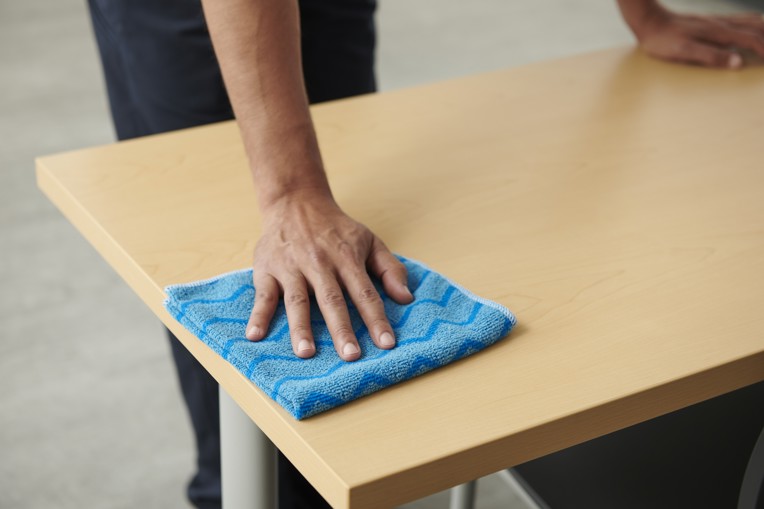
Once food safety standards are met, the next step is to keep the canteen itself clean. A spotless environment helps reduce the spread of bacteria, protects students and staff from foodborne illnesses, and supports the smooth operation of daily activities. Below are practical cleaning steps your canteen staff can follow to keep the space safe, hygienic, and ready for service.
Mop spills as soon as they occur to reduce the spread of germs and prevent falls from happening. Wet floors are not only a slip hazard but also a breeding ground for bacteria. Assign floor spot-checks during breaks and peak service hours. Equip staff with easy-access mops such as the WaveBrake® Bucket System to contain dirty water and minimise cross-contamination.
Clean and sanitise cutting boards after each use to reduce the risk of cross-contamination. Use hot water and food-safe cleaning solutions, especially after handling raw meat or seafood. Assign different cutting boards for vegetables, meats, and cooked foods, and store them in a properly sanitised space once dry.
Properly store foods in sealed containers and keep them in the appropriate temperature. Cold storage should sit below 5°C, while hot food must stay above 60°C if not served immediately. Label containers with prep dates to avoid confusion, reduce food waste, and maintain rotation.
Always wear clean clothing and protective equipment like an apron, and be sure to use a hair net to keep hair from touching food during preparation. Dirty uniforms can transfer germs to cooking surfaces or meals. Staff should change into work clothing before entering the kitchen, and remove them when leaving the space.
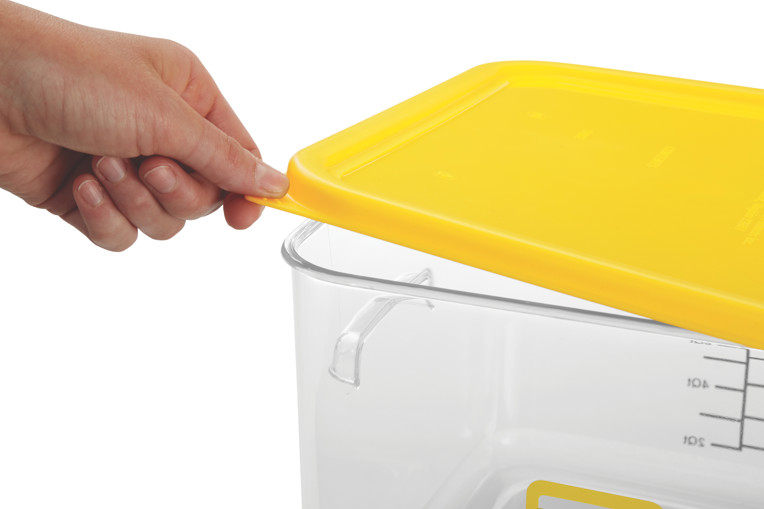
Having the right commercial cleaning tools on-site is the first step to understanding how to keep a school canteen clean. Rubbermaid offers a comprehensive range of solutions designed for school kitchens and dining areas, where food safety and proper hygiene cannot be compromised.
Our Education Cleaning Checklist helps you build a cleaning, disinfecting and sanitising routine that’s easy to follow and suitable for shared areas like classrooms, canteens, and toilets.
Did you know 22 million school days are lost annually due to the common cold? Our Cold & Flu Prevention in Education Guide is based on CDC-recommended hygiene practices and can support a school’s cold and flu strategy.
To support food safety and reduce foodborne illnesses, we recommend:
HYGEN™ Microfibre Cloths for trapping bacteria with just water
High Capacity Janitorial Cleaning Cart to carry supplies across the kitchen and dining space
HYGEN™ Quick Connect Microfibre Mops for fast, effective floor cleaning
AutoFoam Hand Sanitiser to support hygiene at entry and exit points
Check out our Education Product Recommendation Guide for more product ideas. With the right tools and training, canteen staff can maintain a space that supports student health and protects the school’s reputation.
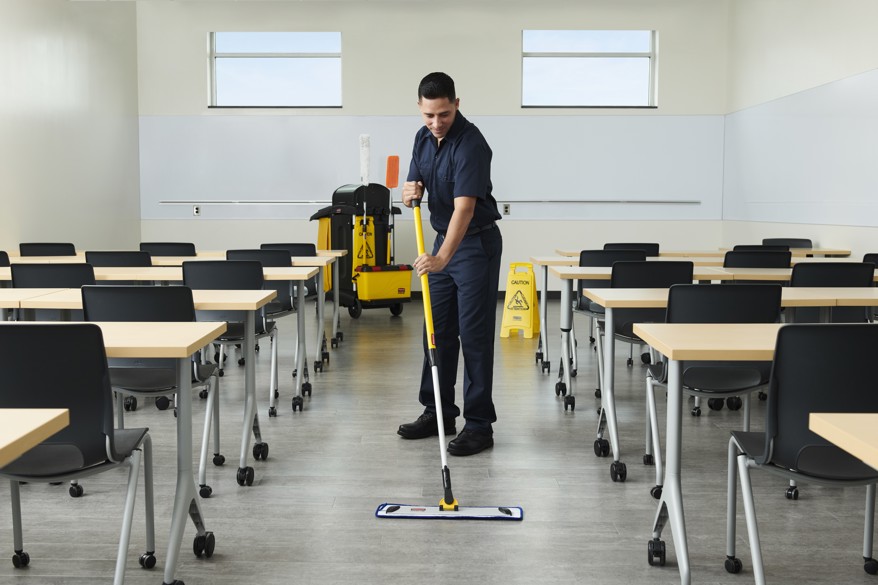
Canteen cleanliness doesn't happen by accident. It starts with daily habits and the right commercial tools. Rubbermaid’s cleaning solutions help staff work faster, reduce contamination risks, and maintain a standard families can trust.